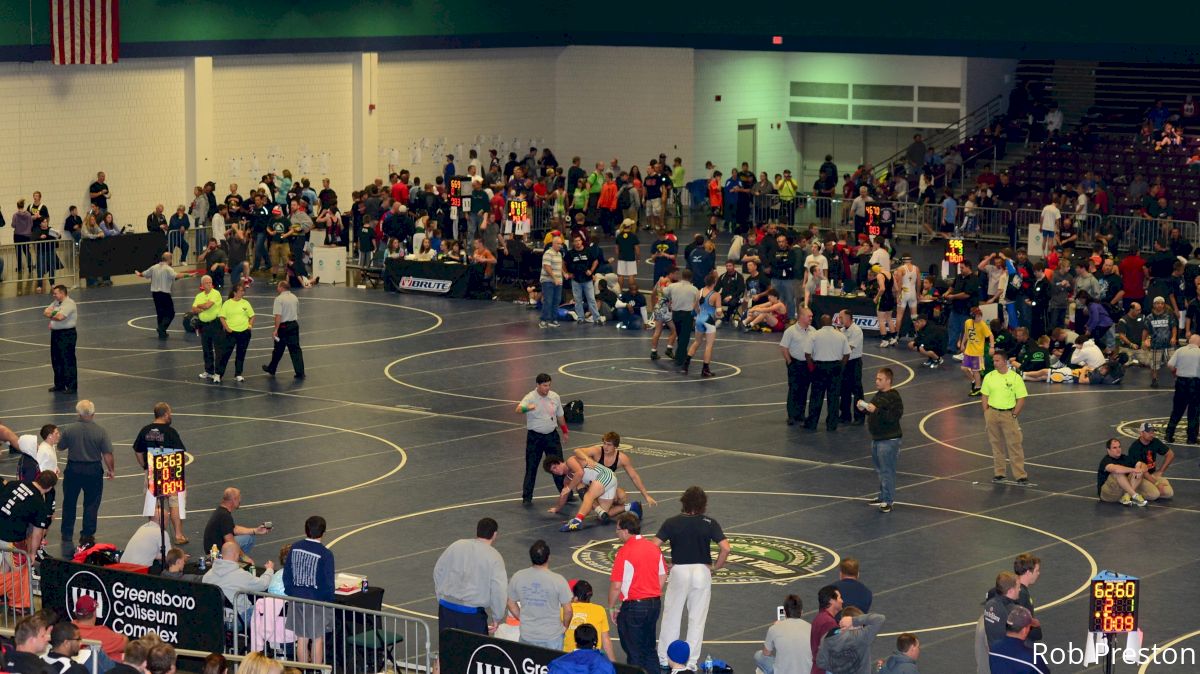2016 Super 32Oct 13, 2016 by Michael Malinconico
Super 32 Is A Pinnacle, Not Just Preseason
Super 32 Is A Pinnacle, Not Just Preseason
Super 32 has become the standard by which most other tournaments and their competitors judge themselves.

Super 32 Isn't Just A Preseason Tournament
Super 32 has become the standard by which most other tournaments and their competitors judge themselves. The 2016 version of the preseason mega-tournament is evolving into much more. It is becoming one of a handful of rigorous pinnacles on the competition schedule by this country's elite wrestlers.
Back in the 1600s when I wrestled in high school, coaches did not give much thought on how to get a wrestler to peak athletically. Many coaches would simply redline their athletes until they were done with the sport. Only the best coaches in the country had the presence of mind to conserve some of their athletes' gas for the end of the race. If you were one of the few wrestlers whose coach was progressive enough to think in terms of training cycles, then congratu-freaking-lations (the rest of us who can barely walk applaud you). As research into performance became more prevalent and in-depth, an increasing amount of coaches started paying attention to when their teams should rest and how they would recover. Our governing body, USA Wrestling, says that a training cycle should begin about six weeks before a major competition.
The thing that becomes tricky is the phrase "major competition." What is major to some athletes and coaches isn't blip on the radar for others. What if you have more than one wrestling coach, and their ideas differ on what makes a major competition? Today, most kids have a high school coach who they train with from late November to mid-March (obviously, some states differ), and they have a private of club coach for the rest of the year.
One thing is for sure, if you're coaching a kid who is seriously considering wrestling at the Division I level in college, he has Super 32 circled on the calendar. It's your job to help him peak for it. What strikes me as funny is that if you are peaking for Super 32, then a good chunk of your wrestling season would be considered "active rest." High school coaches don't really like to hear that, but it's true and is also a really good idea.
Ideally, wrestlers' competition schedules should have peaks and valleys. The idea is to look at a year's worth of events and circle four to six competitions that mean the most to you. Then about six weeks before those events, you should be watching your weight and spending about 12 to 20 hours a week training. In between those training cycles should be active rest, which means six to 12 hours a week of training with emphasis on learning and lifting. This allows for growth in the sport and increase in strength, all while being able to recover between events.
S32 has risen as the premier preseason event. The problem is that many of these elite athletes need some time to recover if they want to excel at the next level and, more importantly, at the highest level. I believe that high school coaches are starting to understand that there is a widening gap between the elite and the average. This realization usually comes with understanding that while dual meet wins look great on a coach's resume, many high school dual meets are simply a waste of a weigh-in for many of our country's best. To place equal emphasis and importance on every event on a high school schedule is to take away value on ones that actually warrant it.
Super 32, FloNationals, Cadet/Junior World Team Trials, and Fargo are all spread out enough where our nation's top age-level wrestlers should be able to put together perfectly timed training cycles and still have enough rest to compete to the best of their abilities later in life. So with Super 32 just days away, let the 2016-17 competition schedule begin!
Stay tuned to FloWrestling for LIVE streaming of Super 32 on Saturday, October 15 and Sunday, October 16.
